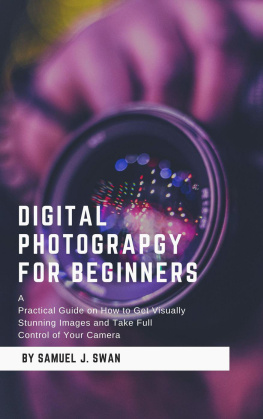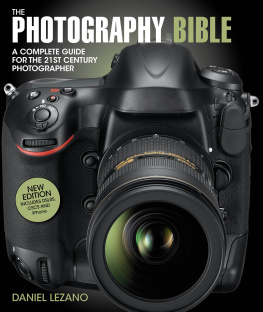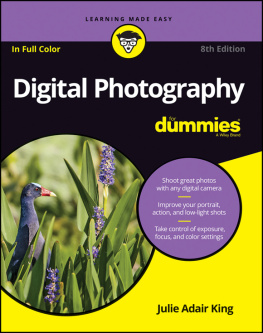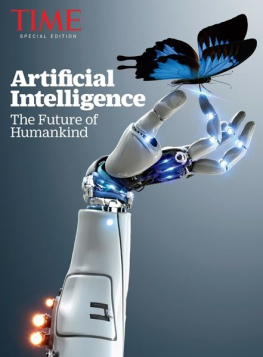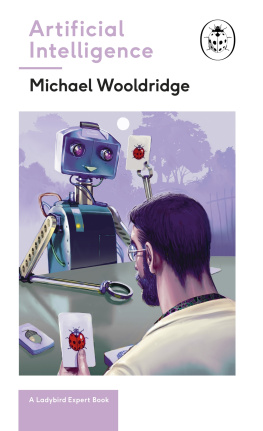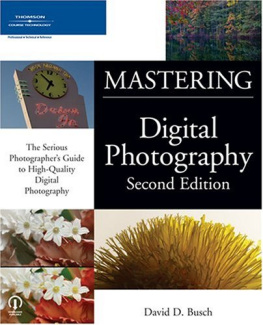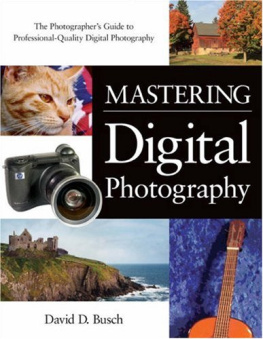The Computer Ate My Photos
Artificial Intelligence and
the Future of Photography
Aaron Hockley
The Computer Ate My Photos: Artificial Intelligence and the Future of Photography
Independently published by Aaron Hockley
13504 NE 84th St, Suite 103-101, Vancouver, WA 98682
techphotoguy.com
Copyright 2021 Aaron Hockley
No part of this book may be reproduced in any form except as permitted by United States copyright law or with express written permission of the Author.
To seek permission for reproduction of any material in this book, contact the Author at the address above or by email to aaron@techphotoguy.com
LIMIT OF LIABILITY / DISCLAIMER OF WARRANTY: The author makes no representation or warranty with respect to the accuracy or completeness of the contents of this work, and specifically disclaims all warranties, including without limitation warranties of fitness for a particular purpose. The advice or recommendations contained herein may not be suitable for every situation. The fact that a website, publication, company, or study is referred to in this work does not mean that the Author endorses that entity or the recommendations that it may make. Be aware that websites and online resources referred to within this work may have been removed or their contents may have changed between when the work was written and when it was read.
The Author has worked with some of the companies mentioned in this work in the past, but there was no monetary or material compensation involved with their inclusion (or exclusion) from this publication.
Tech Photo Guy and Hockley Photography are trademarks of Aaron B. Hockley.
Aaron Hockley, also known as the Tech Photo Guy, brings together his background in technology and photography to write and speak about the intersection of those worlds. He lives in Vancouver, Washington with his family and can be found on the web at techphotoguy.com
For updates on the material in this book, information about the latest developments in photography technology, and insight into the evolving modern photo industry, get more information about whats coming next: next.techphotoguy.com
This book is dedicated to everyone who has moved past arguing about whether the artistic or technical aspects of photography are more important and instead is embracing the union of the two.
1. Welcome to the Third Shift
I got married in the year 2000.
It was a fairly traditional wedding. As such, we engaged in the fairly traditional activity of hiring a professional wedding photographer. We met with several folks in the area and made our selection. Digital photography was new at the time and while some folks were experimenting, all the "real" photographers were still working with film. The expectation was that serious photographers used film and delivered prints, and you hired a professional because only professionals had the gear, skill, and resources to make high-quality images.
My, how things have changed.
The world of popular photography has seen significant changes that have altered the photographic landscape for casual photo hobbyists, advanced amateurs, and professional photographers alike. As we look toward the future, with computers and photography becoming ever-intertwined, we are in the early stages of a third big shift in the photographic worlds related to these two subjects.
Let's explore the previous two shifts and how they've set us up for today.
Hello Internet
For all but the youngest of this books readers, we remember the photography of our childhood consisting of a variety of print products. Our dad had pictures of us and our siblings in his wallet. Images from the family road trip were printed and stored in plastic pages of a photo album that lived on a bookshelf or the coffee table. At family events, a group picture was taken and copies were shared (often sent through the US mail) to relatives everywhere, whether theyd been in attendance or were in a wish you were here situation. Our latest school portrait would hang in the hallway or be placed in a frame on a shelf.
Casual distribution of photographs involved making physical prints and then getting those tangible items to the recipient. It worked well for folks in the same house or town but was challenging for those across the country or around the world. If my parents photographed my sister making an especially big mess of her dinner as a baby, it was a bit of work to share those images with distant relatives.
And then the internet happened.
In the 1990s, proprietary online services such as Prodigy, CompuServe, and America Online gave way to the open internet, and folks in the western world got connected. This access originally came in the form of (relatively slow) dial-up modem access. Who among us doesnt wax nostalgic for the screeching modem tones? Have we forgotten the experience of being disconnected because someone in another part of the house picked up the telephone? The phone-based dial-up modems gave way to DSL and then cable modems as broadband internet access became part of mainstream life.
The Pew Research Center first started measuring United States internet use in 2000, when it found that half of all adults regularly used the internet. That number grew to 90% in 2019 (with 73% on broadband), and Id wager that for folks who are seriously into photography, the number is really close to 100%.
The first big shift in modern photography came when mainstream internet usage made it easy to distribute our pictures.
Even before digital cameras arrived on the scene, photography enthusiasts used scanners to digitize their images onto the computer, and it was then possible to send them anywhere in the world via email. Message boards and early websites made it easy to share work with a broader (and more public) audience.
In the early 2000s, entire communities and companies sprung up around the new world of online photo sharing. Beyond sharing our work with family and friends, these online systems allowed us to connect with other photographers. Flickr was the largest of these communities; there was a point where nearly anyone into photography in any way had a Flickr account and shared their work on the service.
Ten years prior, casual image sharing meant making prints, putting them in an envelope, and waiting for the postal service. Thanks to the internet, it could now be done in a couple of minutes with a few clicks of the mouse.
Digital Cameras Everywhere
If we go back thirty years, one of the things that helped set professional photographers (and the serious hobbyists) apart from average folks was that making great photos required some fairly exclusive gear. Options were limited, and if one wanted to make the best images, it required a hefty investment.
In short, truly serious camera gear wasnt easily accessible to a person who wasnt into photography as their full-time profession.
The first digital cameras that made decent photos were in the same price category, making them only accessible to professionals or those with a lot of disposable income for a hobby. They werent accessible to everyday folks. But like everything in the world of computing, the cost of the technology dropped over time, and eventually we hit a breakthrough in 2003 when Canon released its model 300D, known in the United States as the Digital Rebel. The release of the original Digital Rebel marked the turning point in making high-quality, interchangeable-lens digital cameras accessible to serious photographic hobbyists. For less than $1000, we had a decent digital SLR available that could use Canon's existing lineup of lenses and accessories. After this camera from Canon, we quickly saw similar models show up from Nikon; these two companies DSLRs gained a lot of popularity within a few years.




